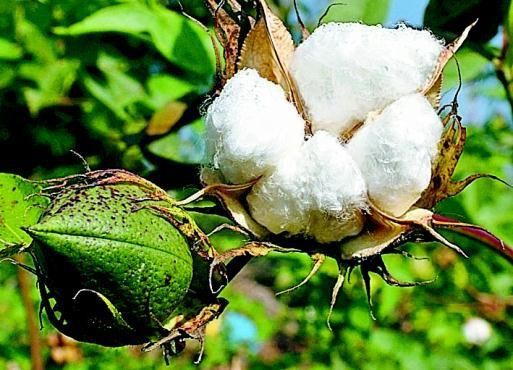BT Cotton India
What are GMO (genetically modified organism)?
When a gene from one organism is purposely moved to improve or change another organism in a laboratory, the result is a genetically modified organism (GMO). It is also sometimes called "transgenic" for transfer of genes.
What is Bt?
Bacillus thuringiensis (Bt) is a spore forming (flash animation) bacterium that produces crystals protein (cry proteins), which are toxic to many species of insects.
Where is Bt found?
Bt can be found almost everywhere in the world. Surveys have indicated that Bt is distributed in the soil sparsely but frequently worldwide. Bt has been found in all types of terrain, including beaches, desert, and tundra habitats.
How many kinds of Bt are there?
There are thousands of different Bt strains, producing over 200 cry proteins that are active against an extensive range of insects and some other invertebrates.
What type of bacteria is Bt?
Bt belongs to the family of bacteria, Bacillus cerus (B. cerus). B. cerus strains produce toxins that cause gastroenteritis (food poisoning) in humans. Bt is differentiated from B. cerus because it contains a plasmid (flash animation) that produces the protein crystals that are toxic to insects. Bt does not cause food poisoning.

Where is Bt used?
Bt is largely used in agriculture, especially organic farming. Bt is also used in urban aerial spraying programs, and in transgenic crops.
How does Bt work?
Bt has to be eaten to cause mortality. The Bt toxin dissolve in the high pH insect gut and become active. The toxins then attack the gut cells of the insect, punching holes in the lining. The Bt spores spills out of the gut and germinate in the insect causing death within a couple days.
Bt action is very specific. Different strains of Bt are specific to different receptors in insect gut wall. Bt toxicity depends on recognizing receptors, damage to the gut by the toxin occurs upon binding to a receptor. Each insect species possesses different types of receptors that will match only certain toxin proteins, like a lock to a key.
It is because of this that farmers have to be careful to match the target pest species with a particular Bt toxin protein which is specific for that insect. This also helps the benifical insects because they will usually not be harmed by that particular strain of Bt.
Animal Safety
Bt products are found to be safe for use in the environment and with mammals. The EPA (environmental protection agency) has not found any human health hazards related to using Bt. In fact the EPA has found Bt safe enough that it has exempted Bt from food residue tolerances, groundwater restrictions, endangered species labeling and special review requirements. Bt is often used near lakes, rivers and dwellings, and has no known effect on wildlife such as mammals, birds, and fish.
Humans exposed orally to 1000 mg/day for 3-5 days of Bt have showed no ill effects. Many tests have been conducted on test animals using different types of exposures. The results of the tests showed that the use of Bt causes few if any negative effects. Bt does not persist in the digestive systems of mammals.
Bt is found to be an eye irritant on test rabbits. There is very slight irritation from inhalation in test animals which may be caused by the physical rather than the biological properties of the Bt formulation tested.
Bt has not been shown to have any chronic toxicity or any carcinogenic effects. There are also no indication that Bt causes reproductive effects or birth defects in mammals.
Bt breaks down readily in the environment. Because of this Bt poses no threat to groundwater. Bt also breaks down under the ultraviolet (UV) light of the sun.
Even with such widespread use of Bt-based products in the past 50 years, only two incidents of repored allergic reaction have been reported to the EPA. In the first incident, it was concluded that the exposed individual was suffering from a previously diagnosed disease. The second involved a person that had a history of life-threatening food allergies. Upon investigation, it was found that the formulation of Bt also contained carbohydrate and preservatives which have been implicated in food allergy.
bt-cotton-india-7339-6FNSuPR.doc (631 KB)

